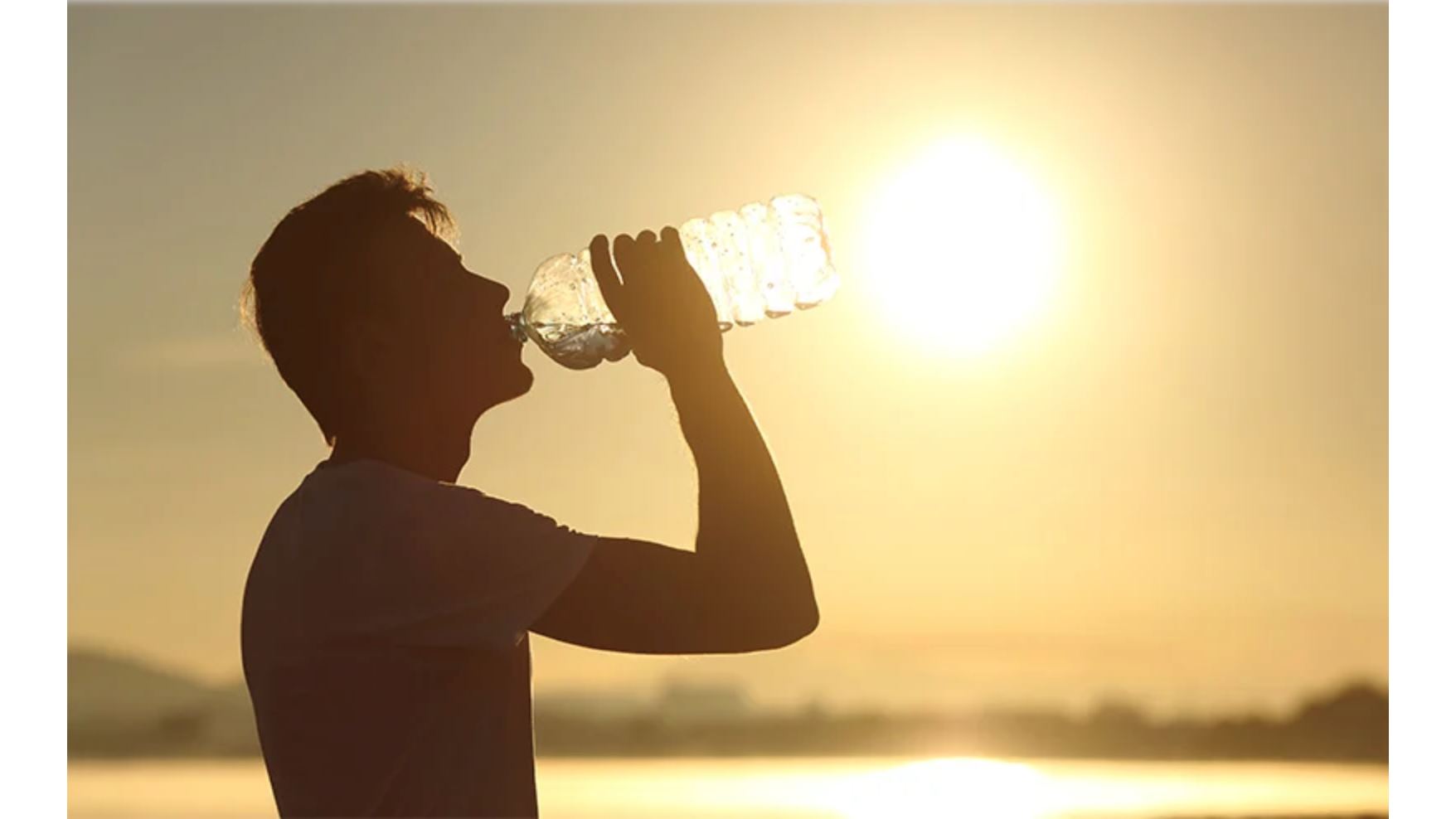It’s that time of year when the temperature starts to rise, and it’s important to make sure we are getting enough water and shade while outdoors, particularly for those who work out in the heat. Our bodies lose water all day as we breathe, sweat and perform daily activities so it’s important to monitor our water intake to ensure we don’t suffer from dehydration or heat stroke.
What’s your water level?
- Drink at least eight 8-ounce glasses of fluid each day to balance your internal water level
- Carry a water bottle with you that you can refill in almost any of the buildings on campus
- Freeze water in freezer-safe water bottles. Take one with you for ice-cold water all day long
- Choose water over sugary drinks
- If you notice you are sweating a lot, drink more water to replenish what your body is losing
Heat stroke is the most serious form of all heat-related injuries. It is most often the result of prolonged exposure to high temperatures and is usually found to be in combination with dehydration. Heat stroke should be considered a serious medical emergency for anyone of any age.
Common symptoms for heat stroke are:
- Hot red, dry or clammy skin
- Dizziness and lightheadedness
- Lack of sweating despite the heat
- Behavioral changes such as confusion, disorientation or staggering
- Nausea and vomiting
- Muscle weakness and/or cramps
- Throbbing headaches
- Seizures
- Loss of consciousness or a coma
First aid for heat stroke:
If heat stroke is suspected, immediately call 911 and render aid. While waiting for the fire department or other medically trained personnel to arrive:
- Move the person to a cooler place, perhaps inside an air-conditioned building or car
- Do not give the person anything to drink
- If possible, take the person’s temperature. If the person’s temperature is higher the 101 degrees Fahrenheit, take actions to cool the person’s body temperature:
- Fan air over the patient while wetting his or her skin with water from a sponge or garden hose
- Apply cool cloths to the patient’s armpits, groin, neck and back to help reduce body temperature
- If possible, immerse the patient in a shower or tub of cool water or an ice bath
Learn more at https://www.cdc.gov or https://www.emergencyphysicians.org.

